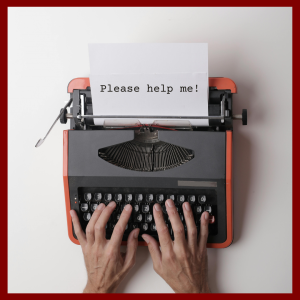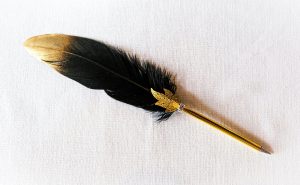I think I can speak for most aspiring authors that we would all love to see our books in bookshops, airports and department stores. But my heart sinks when I speak to writers who ask me how to make this happen. I hate to crush someone’s dreams—never say never—but the reality is, for most of us, that kind of wide exposure is unlikely.
Why? If someone has written an awesome book, then why wouldn’t a store want to stock it? Why is traditional publishing vs self-publishing such a quandary for authors?
Because the two main paths to publishing—traditional and self-publishing—come from opposite directions to reach the same end point: a published book. And how that book reaches shelves is very different.
Traditional publishing: the long road
To publish traditionally, the first step is often to find a literary agent. Most publishing houses do not accept unsolicited manuscripts, meaning, they won’t consider your book unless it comes through an agent who has already polished and pitched it on your behalf. Some publishers open short submission windows for unagented work, but they’re inundated. Out of hundreds of submissions, less than 1% are accepted.
Finding an agent is a hurdle in itself, especially in Australia, where there are relatively few, and most specialise in certain genres. Identifying the right one takes a lot of research, and once you do, you’ll need to hook them with a strong pitch.
If an agent takes you on, they’ll then pitch your book to publishers. This stage can be agonisingly slow—like waiting at a string of ever-red traffic lights. And even if a publisher accepts the manuscript (hooray!), there’s still a long journey ahead: structural edits, title changes, cover design, and the publisher’s marketing plan.
Self-publishing: a steeper but more direct path
With self-publishing, the road is shorter, but there are some steep hills along the way as you learn the systems and skills needed to do-it-yourself. You still have to put in the hard yards, but for me, self-publishing is more gratifying because you always feel like you’re moving along the road. There are many moving parts and so the journey is not dull. You are self-propelled and not reliant on anyone else to give you a push.
Once the book is out, the roads truly diverge. A traditionally published author has built-in distribution and marketing (though often not as much as you’d hope), whereas a self-published author has to switch gears into sales and promotion. You can outsource this, of course, but that requires a budget.
So, will your book be in stores?
Here’s the hard truth: even after all that work, it’s still unlikely your book will appear in the hallowed halls of major retailers because most stores only buy stock from the sales reps of traditional publishers. That said, local bookshops and libraries are often more open to supporting independent authors, especially if you approach them professionally and build a relationship.
So, trad or indie?
No matter the path, if you’ve written, finished, and published a book, whether through a publisher or by your own hand, it’s an incredible achievement. Holding your book in your hands, knowing the work you put into it, is a moment to be proud of.
So, which path will you take, traditional publishing vs self-publishing? Well, in my opinion, the only surefire way you end up with that book in your hands, and hopefully on at least digital bookshelves, is by self-publishing.
Remember I can guide you through the self-publishing process. Send me a message here for more info.





